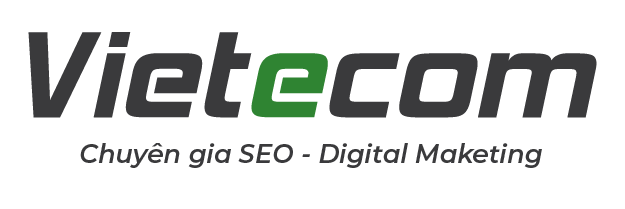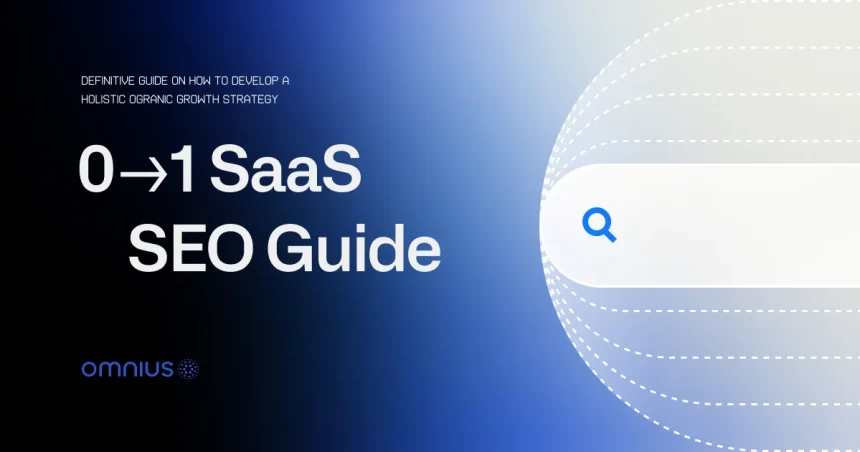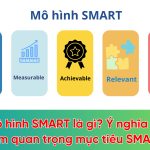Did you know that searching for a SaaS SEO guide wasn’t a common practice a decade or two ago?
The SaaS market had lower competition, making it relatively easy for products in this niche to reach their target audience without extensive SEO efforts.
Today, this niche has changed drastically.
The SaaS market is now more saturated than ever, particularly with the global shift toward digital transformation spurred by the pandemic.
In light of these changes, constructing a foolproof customer acquisition and marketing growth strategy is paramount, with SEO playing an important role.
This SaaS SEO guide is designed to walk you through the entire customer acquisition process and provide insights on how your company can strategically approach SEO and content marketing to achieve measurable results.
Let’s dive in.
What is SaaS SEO?
SaaS SEO is an online marketing technique that helps to increase the visibility of SaaS company websites so users can find them more easily.
As you might expect, SaaS SEO relies on organic search to attract attention.
Optimizing your SaaS website’s pages for relevant keywords can help you be found in SERPs(Search Engine Result Pages) when someone searches for these keywords.
This is crucial because, according to Sistrix study, the first organic search result garners approximately 28.5% of all clicks, translating to a substantial influx of traffic.

SaaS for SEO typically includes different points to take care of:

What are the Benefits of SEO for SaaS Companies?
SEO plays a crucial role in helping SaaS companies enhance their online visibility, attract qualified leads, and ultimately drive business growth.
SEO accounts for up to 77% of organic traffic for SaaS companies on average.
Here’s how SEO can benefit SaaS companies:
✅ Increases Visibility and Brand Awareness – Implementing SEO and content creation into your work helps expose the brand to a larger audience, improving overall brand awareness.
✅ Authority Building – SaaS companies can position themselves as industry leaders and build authority in their niche, which not only helps attract more visitors but also strengthens the brand’s credibility both within SERP and in general.
✅ Cost-Effective – Organic search traffic is essentially free(if you know how to incorporate it), and the long-term benefits of ranking well in search results outweigh the initial investment in SEO efforts.
✅ Competitive Advantage – SaaS companies that invest in SEO are more likely to outrank competitors in search results, making it easier for potential customers to discover and choose their products or services.
What Sets SaaS SEO Apart?
SaaS SEO includes all the activities you do to improve your organic rankings and increase the visibility of your SaaS website so that you can get more qualified traffic and increase your sales.
In the realm of SaaS SEO, emphasis is placed on three key aspects:
✅ Tailoring content – is essential to diverse funnel stages, given the intricate nature of SaaS sales cycles. Striking a balance between acquisition and retention efforts is essential.
✅ Establishing as an authoritative figure – Noteworthy brands, such as HubSpot, Ahrefs, or SemRush, are recognized as primary sources for educational content in their respective domains.
✅ Fostering trust and credibility – building valuable backlinks and other SEO strategies is of utmost importance for getting credibility on Google.
These strategies differ from those used in other industries, such as news websites or cosmetics brands, where the focus is on generating traffic and clicks or facilitating one-offer purchases.
6 Steps to Craft and Implement an Effective SaaS SEO Strategy
Formulating a prosperous SEO strategy for your SaaS enterprise necessitates meticulous planning, thorough research, and precise execution.
By adhering to the outlined steps in this section and employing the appropriate tools and methodologies, you can enhance your website’s visibility and draw in increased organic traffic, leads, and sales.
Bear in mind that SEO is a continuous undertaking!
It entails consistently monitoring and refining your SEO strategy in response to shifts in search engine algorithms and industry trends.
Without further delay, let’s delve into the essential steps to construct a triumphant SEO strategy tailored to your SaaS business.
1. Setting Your Business Goals And KPIs
Initiating a successful SEO strategy for your SaaS business commences with establishing clear business goals and key performance indicators (KPIs).
The absence of well-defined goals and KPIs leaves you without a direction and a means to gauge your progress.
When formulating business goals, adhere to specific, measurable, achievable, relevant, and time-bound principles—essentially following the “SMART” criteria.
For instance, a SMART SEO goal could involve increasing organic traffic to your website by 30% within the next six months.
Once your SaaS SEO goals are established, it’s crucial to pinpoint the KPIs that will effectively measure your advancement toward those goals. Some common SEO KPIs encompass:

But let’s be real: conversions, profit, and retention are some of the most important SaaS metrics that will determine the future of your business.
To monitor these KPIs, utilize tools like Google Analytics and Google Search Console.
These tools provide valuable insights into your website’s performance and aid in identifying areas for enhancement.
2. Analyze Your Competitors
Analyzing your competitors is a crucial step in formulating an effective SEO strategy for your SaaS company.
By analyzing your competitors’ SEO approaches, you can identify their strengths and pinpoint areas where your strategy can be better than theirs.
To start a competitor analysis, you first need to identify your key competitors in your industry or niche.
A Google search for your target keywords is a handy way to identify key competitors that are prominent in search results.
For example, if you have a project management tool, you can find out your biggest competitors on Google by entering “project management tool/s.“
SEO competitors don’t need to be the same as your competitors in real.
Someone who is your direct competitor may not be investing in SEO, so there’s no point analyzing their traffic, keywords they rank for, and so on.
So, once you have identified your competitors, you should comprehensively analyze their website and SEO performance to uncover successful practices and potential gaps to exploit.
Here’s an example of Loom, their performance, and best-performing pages.

It can be a great starting point for you.
Some of the key factors you should consider in this assessment include:

To make this competitor research easier, you can use SEO tools that provide valuable insights into your competitor’s strategies, allowing you to refine and improve your own SEO strategy.
3. Identify Keywords and Develop an SEO Strategy
In the realm of SaaS business, your landing pages serve as the cornerstone of both inbound and outbound marketing campaigns.
They function as the entry point guiding users toward your core product, making the optimization of these landing pages paramount.
To commence this optimization journey, it’s crucial to define the keywords that align best with your landing pages.
This list of keywords can be derived from the initial seed keywords you established.
If you have multiple landing pages, each should cater to a distinct set of keywords, a process further refined through competitor analysis and insights gained from understanding your target audience.
Begin by inputting your seed keywords into these tools, and you’ll receive an extensive list of potential keywords tailored for optimal alignment with your SaaS landing pages.
Let’s say you have a video screen recording tool.
By typing the “video screen recording” into a keyword research tool, even Google can help you identify keywords that will be the starting point for your strategy.

Once you identify the main keywords related to your website and product pages, it will be much easier to create clusters around those pages and define your SEO strategy in depth.

You can leverage SEO keyword research tools to identify the most fitting keywords and to map the clusters you’ll target in the future.
Why is this important?
Optimizing landing pages with the right keywords is essential, as organic traffic generated by these keywords tends to progress through the sales funnel, enhancing the likelihood of conversions.
Especially when supported by other related activities.

4. Create The Best Possible Content
Are you creating compelling content yet finding it challenging to surpass other articles on the same topic in search rankings?
This might be because your content isn’t outperforming competitors in effectively addressing users’ search queries.
To enhance your content’s visibility and user satisfaction, consider implementing these eight strategies:
✅ Develop content that delves deeper, focusing on substance rather than just word count.
✅ Incorporate varied content types that your competitors may be lacking. Interactive elements such as infographics, videos, and animations often yield twice the conversions compared to static content.
✅ Opt for concise URLs, as shorter ones typically enjoy better rankings than longer counterparts.
✅ Enhance the structure of your content for a streamlined reading experience. Readers prefer well-organized information that delivers answers swiftly.
✅ Integrate more visuals into your content, as articles featuring 10 or more images tend to achieve higher rankings.
✅ Improve readability by utilizing elements such as bullet points, white space, and paragraphs.
✅ Craft a captivating title that entices and engages readers from the outset.
✅ Utilize proven blog post templates to provide a better organizational structure to your article.
Check out our Complete SaaS Content Audit Checklist to help you transform your content into a lead generation machine.
5. Optimize Technical and On-Page SEO
Enhancing technical and on-page SEO entails refining the technical aspects of your website, such as page speed, mobile responsiveness, and site architecture.
It also involves optimizing on-page elements, including meta titles and descriptions, header tags, schema markups, hreflang tags, and so on.
To streamline and enhance these technical and on-page elements, leverage tools like Google Search Console.
It will help you pinpoint any technical issues on your website and offer valuable recommendations for remedying them.
The focus of technical and on-page optimization lies in the following areas:

6. Build Relevant and HQ Backlinks
Building backlinks is a creative strategy to improve your SaaS company’s SEO ranking and increase your website’s visibility and domain authority.
Essentially, backlinks are links that originate from other websites and drive traffic to your website.
Backlinks have long been an integral part of search engine optimization and continue to have a huge impact on a website’s authority and relevance.

For a solid backlink strategy, creating quality, informative content that attracts links from other websites is important.
This can include writing blog posts, designing infographics, ebooks or producing videos that not only showcase your expertise but also provide value to your target audience.
To locate reputable websites for potential backlinks, use these tools to help you identify authoritative websites in your industry or niche that are likely to provide valuable backlinks.
Keep in mind, when reaching out to other websites, authenticity is key.
Introduce yourself and your business and explain why your content could be a useful addition to their website.
Building genuine relationships with website owners can pave the way for long-term partnerships and more backlinks over time.
7. Track Your Performance and Optimize
Regularly assessing your website’s performance and adapting your approach as necessary, using tools such as Google Analytics, is important.
Also, monitoring your website’s ranking in Google Search Console is important to understand your online presence and refine your digital strategy.
By keeping a close eye on your performance, you can assess the impact of your SEO initiatives, identify patterns, and uncover potential areas for improvement.
For example, if you observe a drop in rankings for a particular keyword, you have the opportunity to optimize and implement improvements to regain the lost visibility.
Similarly, tracking fluctuations in the positions of your competitors’ websites provides valuable insight into their tactics and allows you to stay one step ahead of them.
Conclusion
Building a solid online presence is essential for a SaaS company, and achieving this through SEO can help you save resources and lead to sustainable growth over time.
However, creating a solid SaaS SEO strategy requires a lot of time and experimentation.
Investing in tools, working with SEO experts, conducting extensive competitor and audience research, and aligning strategies with your organic traffic acquisition goals are essential steps that often take months or even years to complete.
If you’re unsure about these steps and don’t want to ruin your SEO from the beginning, you should look for the experts to help you set everything up properly.
Don’t know where to start?
Schedule a free consultation, and we’ll give you expert advice on how to start your SEO journey to save years of unnecessary wandering without results!
Nguồn: omnius.so








